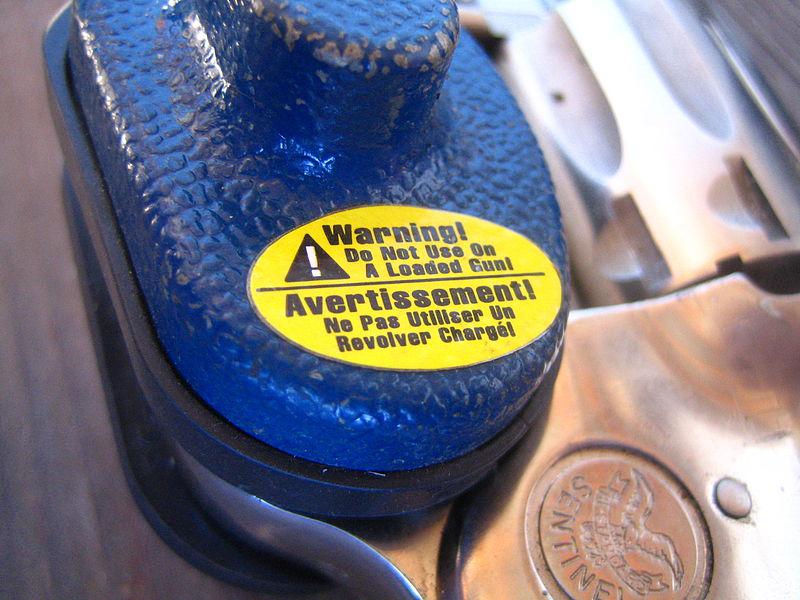Crime is Slate’s crime blog. Like us on Facebook, and follow us on Twitter @slatecrime.
I write a lot about “accidental” child shooting deaths—the stories of children who kill themselves or other kids with loaded, unsecured guns. It’s a gloomy beat, long on mourning and short on solutions. One potential fix that always seems to come up is requiring gun owners to put trigger locks on their firearms. It’s a simple idea. But as solutions to the problem of accidental child shooting deaths go, I’m not sure it’s a particularly effective one.
Though there are lots of different types of trigger locks, perhaps the most common variety is a small plastic or metal device that fits over and through a gun’s trigger guard, impeding one’s ability to shoot. Like a padlock, an external trigger lock can only be removed with a key or the proper combination. In 2008’s District of Columbia v. Heller, the Supreme Court ruled that a D.C. law requiring gun owners to use trigger locks violated the Second Amendment, so we probably won’t be seeing mandatory trigger locks anytime soon. But, even so, the devices are inexpensive and easy to produce and distribute, and if governments or gun groups wanted to do so, they could easily buy trigger locks in bulk and distribute them for free, like condoms.
But, also like condoms, a lot of people just don’t want to use them. Many of the anti-trigger lock arguments are pathetic. (“The increased time it takes to get the gun ready to deter a criminal will assuredly result in more good guys biting the dust,” Joseph Farah wrote in 2000. Assuredly.) However, there’s one point that should make anyone think twice before touting trigger locks as some Holy Grail of gun safety. Trigger locks are not designed to be used on loaded guns—which makes them basically useless for preventing negligent discharges. In fact, a trigger lock might actually make a loaded gun more dangerous.
Your basic trigger lock’s locking mechanism involves a small bar or rod that slides through a gun’s trigger guard. That rod comes uncomfortably close to the trigger itself, which isn’t a problem if the gun is unloaded, but which could be a huge problem if it’s not. If you install or remove a trigger lock while your gun is loaded, you risk setting the gun off while you’re messing around near the trigger area. Just as worrisome is the fact that a loaded, trigger-locked gun could discharge if dropped or jostled, or if someone exerted significant pressure on the lock. (This video provides a good overview of how trigger locks work—or don’t work, as the case may be.)
Sure, the same thing could theoretically happen with a non-trigger-locked gun. But trigger locks could create an illusion of safety where it doesn’t actually exist. You can certainly imagine someone being more apt to leave a loaded, trigger-locked gun on the kitchen table, thinking that the kids won’t be able to get to it because, after all, the trigger is locked.
So what’s the point of trigger locks, you ask? Well, they can serve to dissuade unauthorized users from accessing your weapon. And, for another thing, they do provide a certain level of protection against accidental discharges. But a gun safe, to my mind, would be a much more effective safety tactic.
Why, then, are trigger locks such a popular idea? In part, because they’re a low-impact solution. You can imagine them being adopted without undue hassle. They don’t require gun owners to retrofit their weapons with some complicated new technology; they don’t count on legislators passing laws that would never actually go anywhere in real life. You just buy it and slip it on your gun. Easy.
But that doesn’t mean they work well. If we think of gun safety measures like anti-theft devices, a trigger lock is sort of like a sign reading “Please Do Not Steal From This Store”—a well-meaning idea but mostly ineffectual. When it comes to the question of how to most effectively prevent accidental child shooting deaths, trigger locks are definitely not the best answer.
